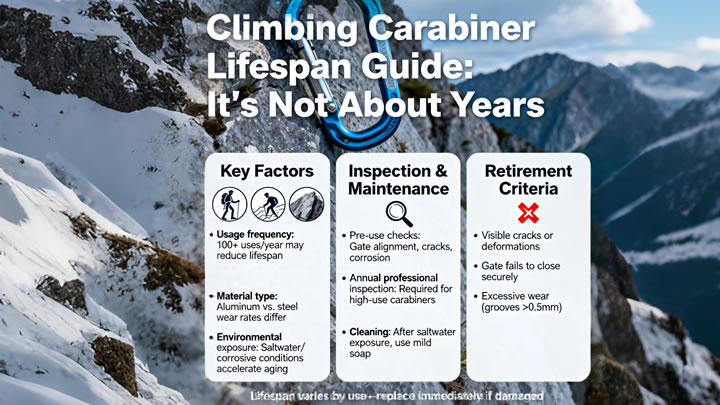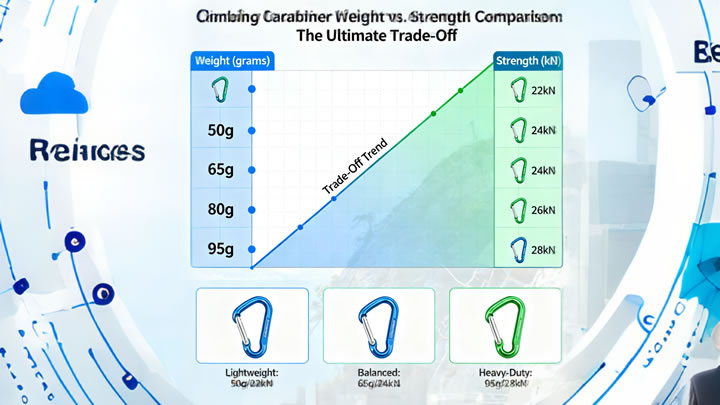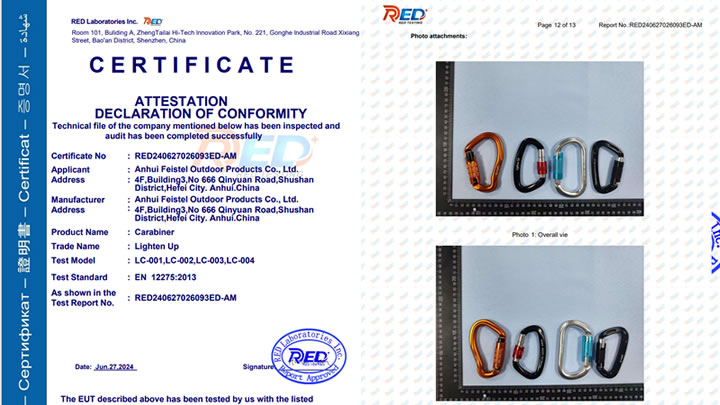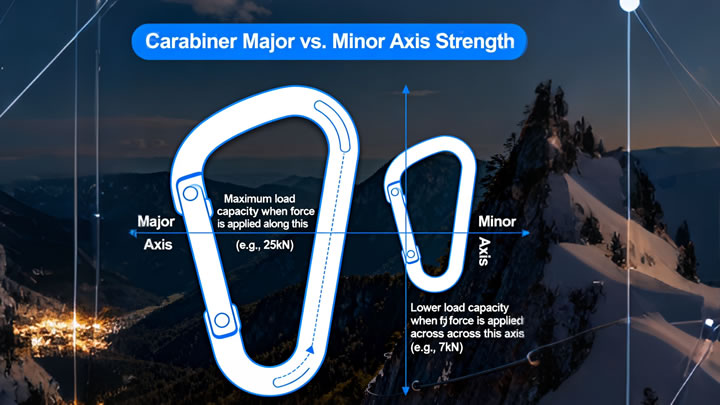Climbing Carabiner Weight vs. Strength Comparison: The Ultimate Trade-Off
In the world of climbing, every gram counts. Whether you’re battling up a long multi-pitch route or aiming for a speed record, the weight on your harness can feel like an anchor. This pursuit of lightness brings us to a critical piece of gear: the carabiner. The choice often seems simple: a heavier carabiner feels burly and strong, while a lighter one promises unburdened performance. But is the relationship between carabiner weight and strength truly that direct? This article delves into the engineering and materials science behind this ultimate trade-off to help you make an informed decision.
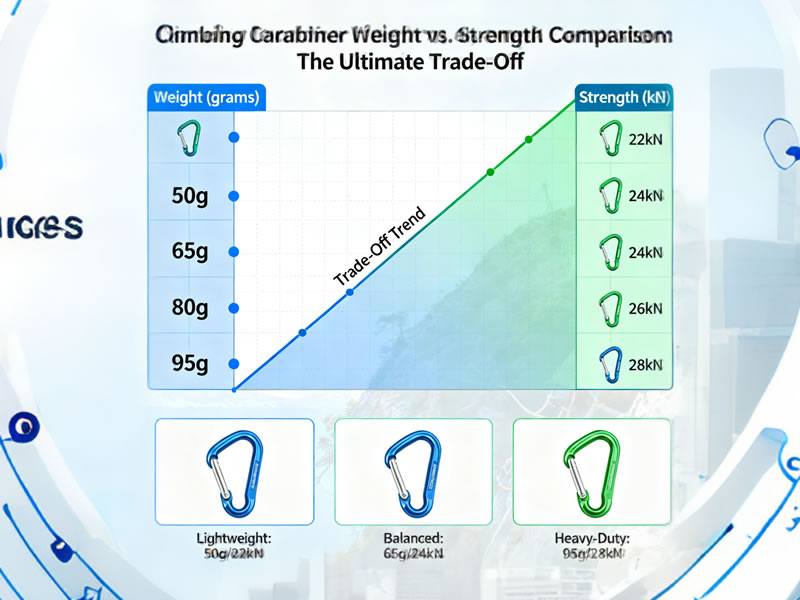
The Basic Relationship: It’s Not Just About Mass
At a most basic level, there is a correlation between weight and strength. A larger, heavier carabiner has more material, which generally allows it to withstand higher forces. However, this is an oversimplification. Modern carabiner design is a sophisticated exercise in structural optimization and advanced material science.
Think of it not as "less weight equals less strength," but as a pursuit of the optimal strength-to-weight ratio. The goal of manufacturers is to create a carabiner that is as light as possible while still meeting or exceeding the required safety standards (typically a major axis strength of 22-24 kN for climbing).
How Lightweight Carabiners Maintain Strength
So, how do engineers shave off precious grams without compromising the crucial kN ratings? They do it through several key methods:
- Advanced Alloys: The most significant factor is the material. Standard carabiners are made from 7075 aluminum alloy, which is strong and durable. However, high-performance lightweight carabiners often use even more advanced alloys or 7075 that has been specially heat-treated to increase its specific strength (strength per unit of density). This allows for a thinner profile without sacrificing the overall strength.
- I-Beam or Hollow-Core Design: Perhaps the most visible innovation. By milling out a channel or creating an I-beam shape on the spine, manufacturers remove material that contributes little to the carabiner's overall strength, much like how an steel I-beam supports buildings without solid mass. This strategically removes weight from areas of low stress while preserving integrity where it matters most.
- Shape Optimization: Using computer modeling (Finite Element Analysis), engineers can design shapes that distribute stress more evenly. The iconic "D" or "HMS" shape is already efficient, but subtle refinements to the curve of the spine and the gate nose allow for a more uniform distribution of force, eliminating the need for excess material.
Where Weight Savings Can Impact Performance
While major axis strength is often maintained, there are areas where a dramatic reduction in weight can lead to compromises a climber should be aware of:
- Durability and Gate Feel: A lighter carabiner often has a thinner wire gate. While strong enough for tests, it may be more prone to getting bent or hooked on rock features over time. The gate action might feel "tinny" or less robust compared to a solid gate.
- Handling: A super-lightweight carabiner can be more difficult to handle, especially with cold or gloved hands. Its lighter mass may not swing as easily, making clipping slightly less intuitive for some.
- Cross-Loading Risk: Some ultra-light designs have a very narrow profile, which might theoretically be slightly more prone to cross-loading in a quickdraw if not carefully managed.
Choosing for Your Climbing Discipline: A Practical Guide
The "best" carabiner depends entirely on your goals:
- Sport Climbing & Alpine: For the weight-conscious climber, lightweight wire-gate carabiners are the undisputed king. The minor compromises in durability are far outweighed by the benefit of saving hundreds of grams over a full rack of quickdraws. The high strength-to-weight ratio is perfect for these disciplines.
- Big Wall & Aid Climbing: Here, durability and repeated loading often trump minimal weight. Heavier, solid-gate carabiners are often preferred. They can withstand constant abrasion from gear, daisy chains, and ascenders without showing as much wear.
- Gym Climbing: For indoor use, where falls are clean and gear abuse is minimal, almost any UIAA/CE-certified carabiner is suitable. This is a great place to use lighter carabiners.
Conclusion: Certified Performance Over Raw Speculation
The most important takeaway is this: Any carabiner bearing a UIAA or CE certification mark has passed the same rigorous strength tests. A 22 kN lightweight carabiner is just as strong on its major axis as a 22 kN heavy one. The difference lies in durability, handling, and the advanced engineering required to achieve that rating with less material.
When comparing, look beyond just weight and strength. Consider the gate type, the shape, and the feel in your hand. For most climbers pushing their limits on rock or ice, the incredible strength-to-weight ratio of modern lightweight carabiners offers a clear advantage, proving that with smart engineering, you truly can have your cake and eat it too.

